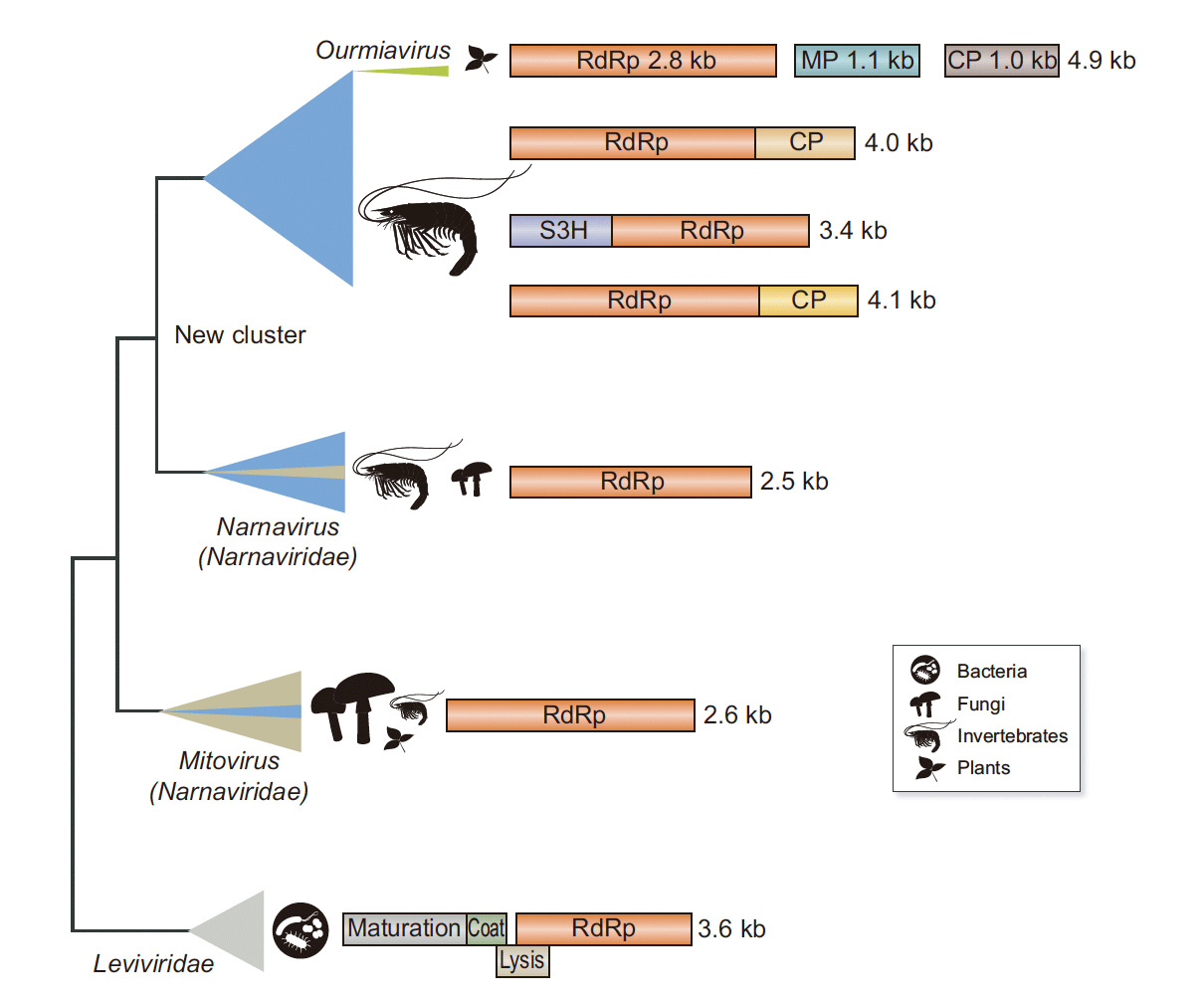博文
New Phytologist:植物与真菌病毒之间的演化关系(综述)
||
Evolutionary and ecological links between plant and fungal viruses
First author: Marilyn J. Roossinck; Affiliations: Pennsylvania State University (宾夕法尼亚州立大学): Pennsylvania, USA
Corresponding author: Marilyn J. Roossinck
Plants and microorganisms have been interacting in both positive and negative ways for millions of years. They are also frequently infected with viruses that can have positive or negative impacts. A majority of virus families with members that infect fungi have counterparts that infect plants, and in some cases the phylogenetic analyses of these virus families indicate transmission between the plant and fungal kingdoms. These similarities reflect the host relationships; fungi are evolutionarily more closely related to animals than to plants but share very few viral signatures with animal viruses. The details of several of these interactions are described, and the evolutionary implications of viral cross‐kingdom interactions and horizontal gene transfer are proposed.
数百万年来,植物和微生物通过正向和反向的方式互相作用。同时,植物还经常被病毒所侵染,这些病菌有些有正向、有些有负向的影响。大部分能够侵染真菌的病毒家族会存在对应能够侵染植物的病毒家族成员,在某些情况下这些病毒家族的进化分析揭示了植物与真菌之间的跨界传递。这些相似性反映了寄主之间的关系,相对于植物而言,真菌在演化上更加接近动物,但具有更少的与动物病毒相似的病毒特性。本文综述了这些互作的具体细节,包括病毒跨界互作和基因水平转移在演化上的意义。
通讯:Marilyn J. Roossinck (https://plantpath.psu.edu/directory/mjr25)
个人简介:科罗拉多大学医学院,博士。
研究方向:病菌演化的生态学中的病毒-植物、病毒-植物-真菌相互作用。
doi: https://doi.org/10.1111/nph.15364
Journal: New Phytologist
First Published:07 August, 2018
(P.S. 原文下载:链接:https://pan.baidu.com/s/1qFiSsqwlF_7JjmGMbedfhQ 密码:dmu6)
https://blog.sciencenet.cn/blog-3158122-1128496.html
上一篇:Plant Cell:矮牵牛与拟南芥蜜腺发育的分子基础
下一篇:Nature Genetics:拟南芥提前开花调控
全部作者的其他最新博文
- • Plant Physiology:CsMADS3促进柑果中的叶绿素降解和类胡萝卜素合成(华中农业大学)
- • Molecular Plant:LBD11-ROS反馈调节作用于拟南芥的维管形成层增殖和次生生长(浦项科技大学)
- • Science Advances:根结线虫通过调控植物的CLE3-CLV1模块,促进侵染进程(日本熊本大学)
- • Nature Communications:油菜素内酯参与植物营养生长期转变的分子机制解析(浙江农林大学)
- • Current Biology:光合作用产生的蔗糖驱动侧根“生物钟”(德国弗莱堡大学)
- • PNAS:花同源异型基因在叶中被抑制、花中被激活的分子机制(南卡罗来纳大学)


